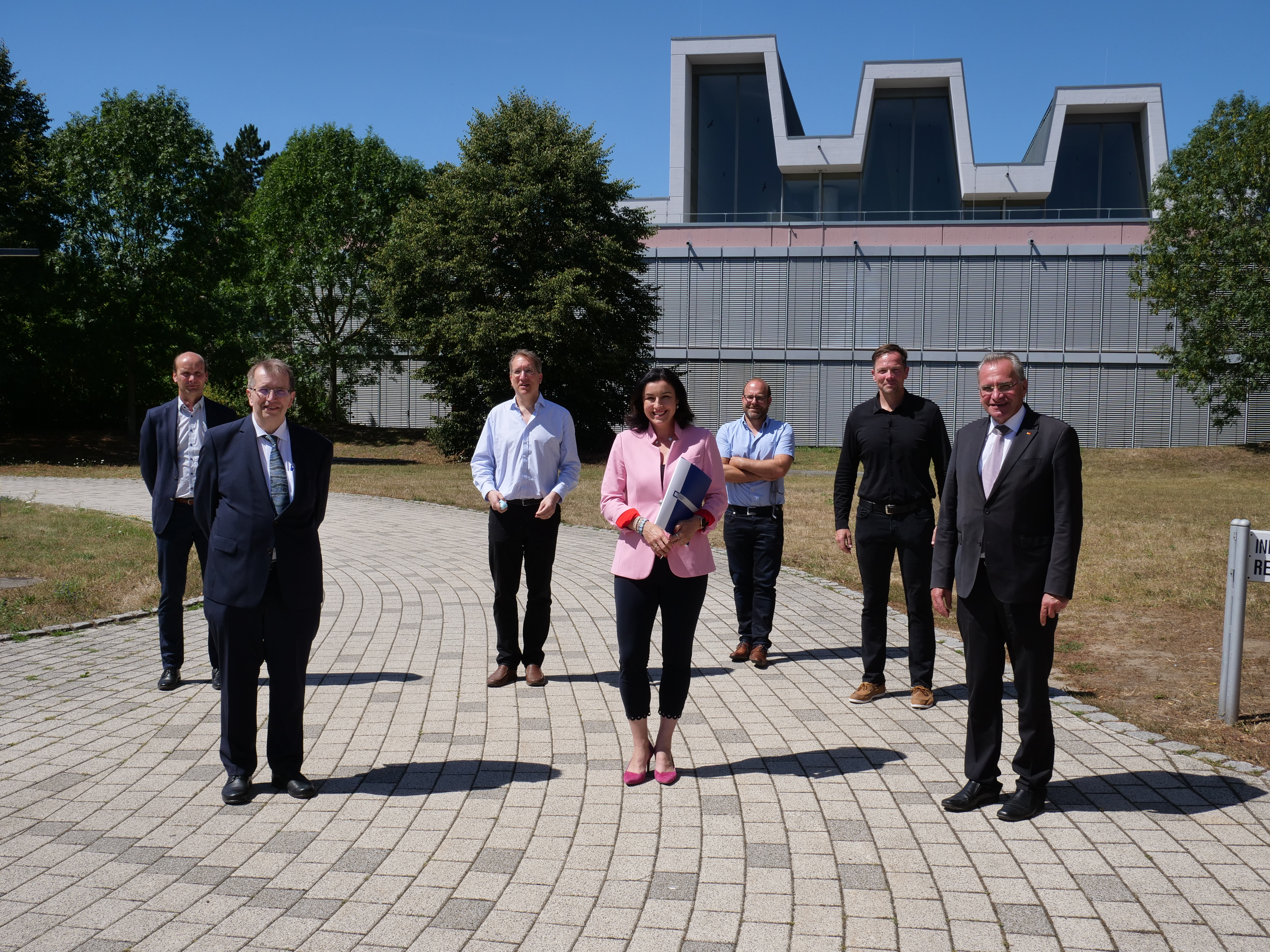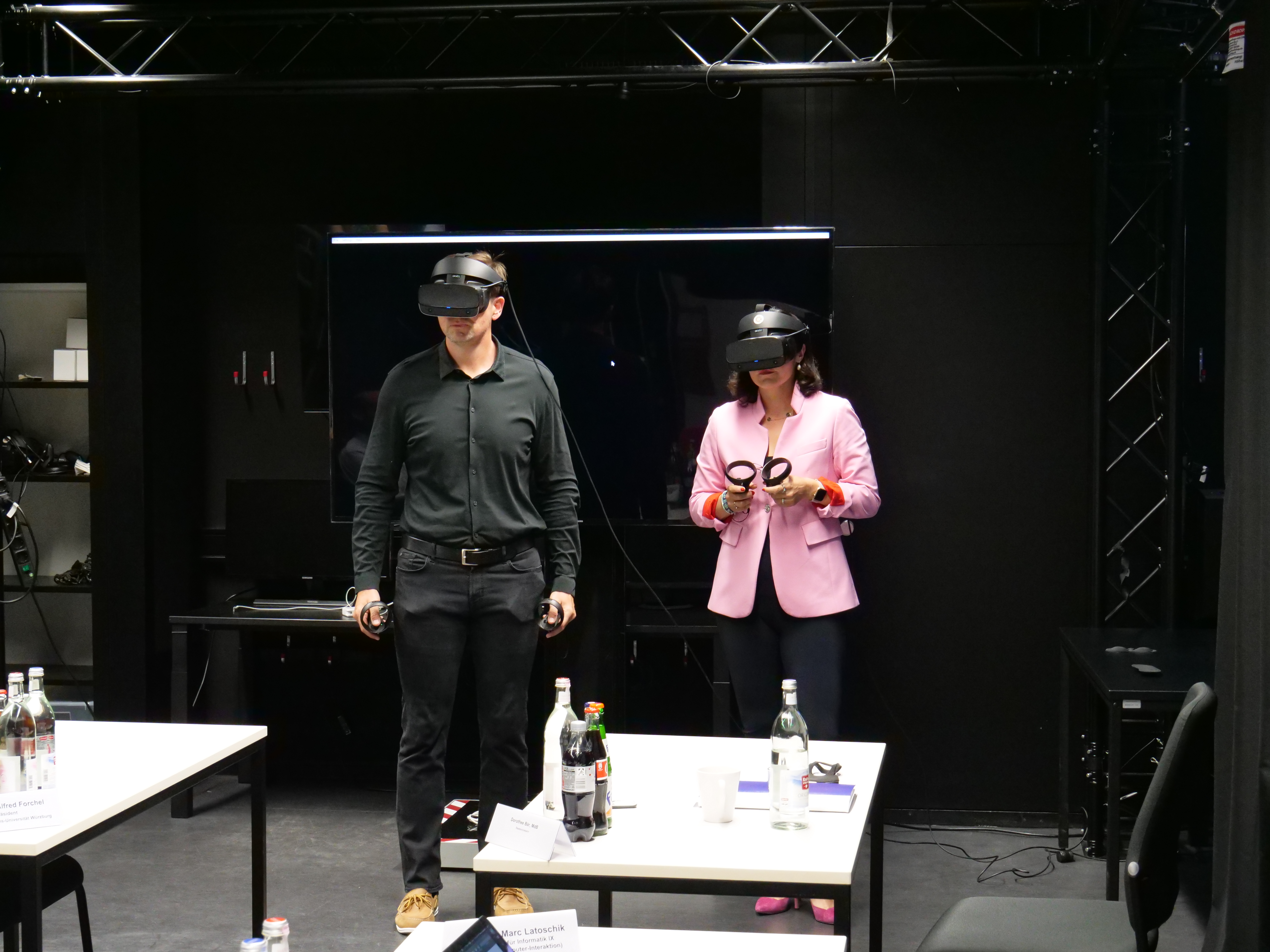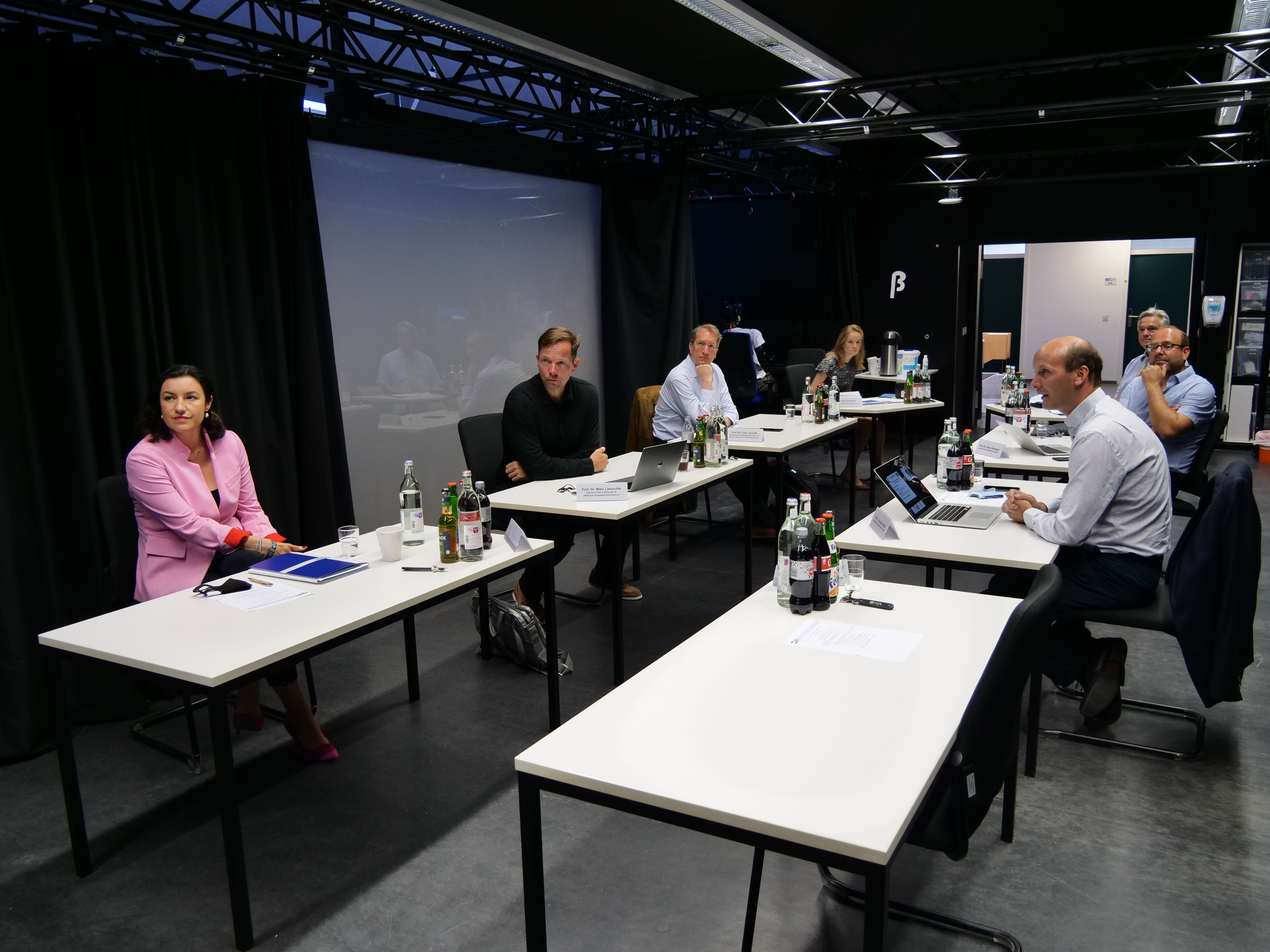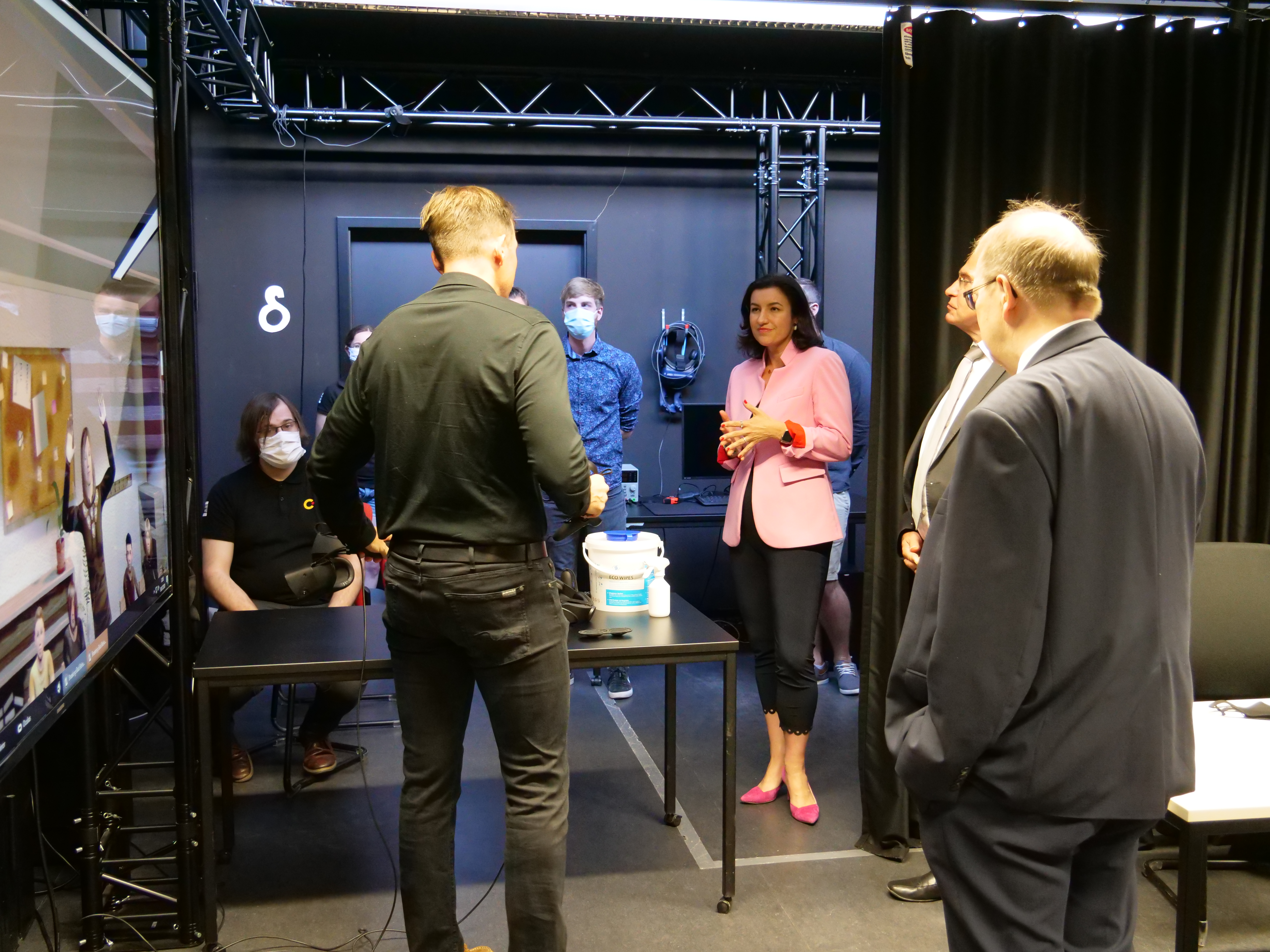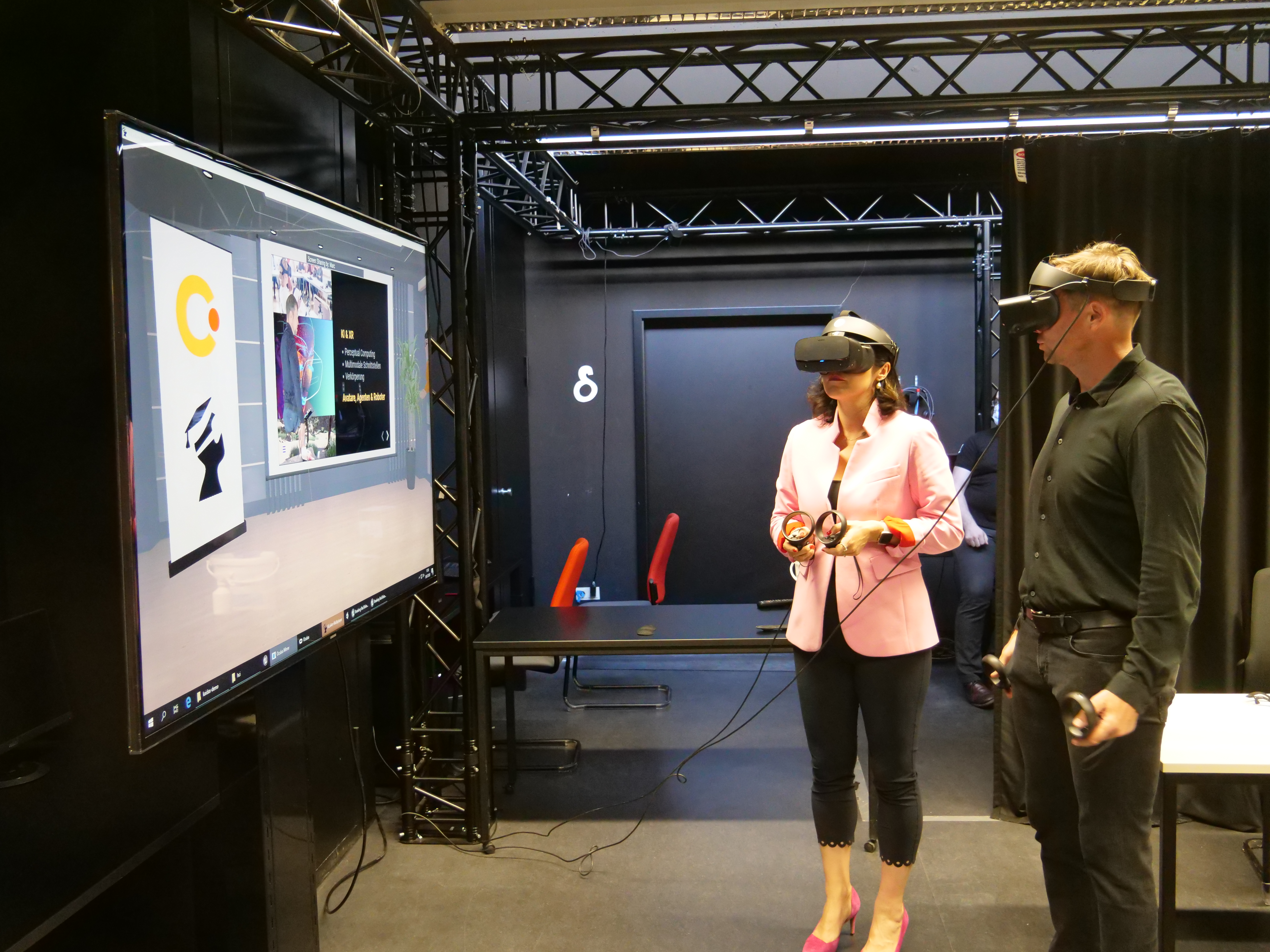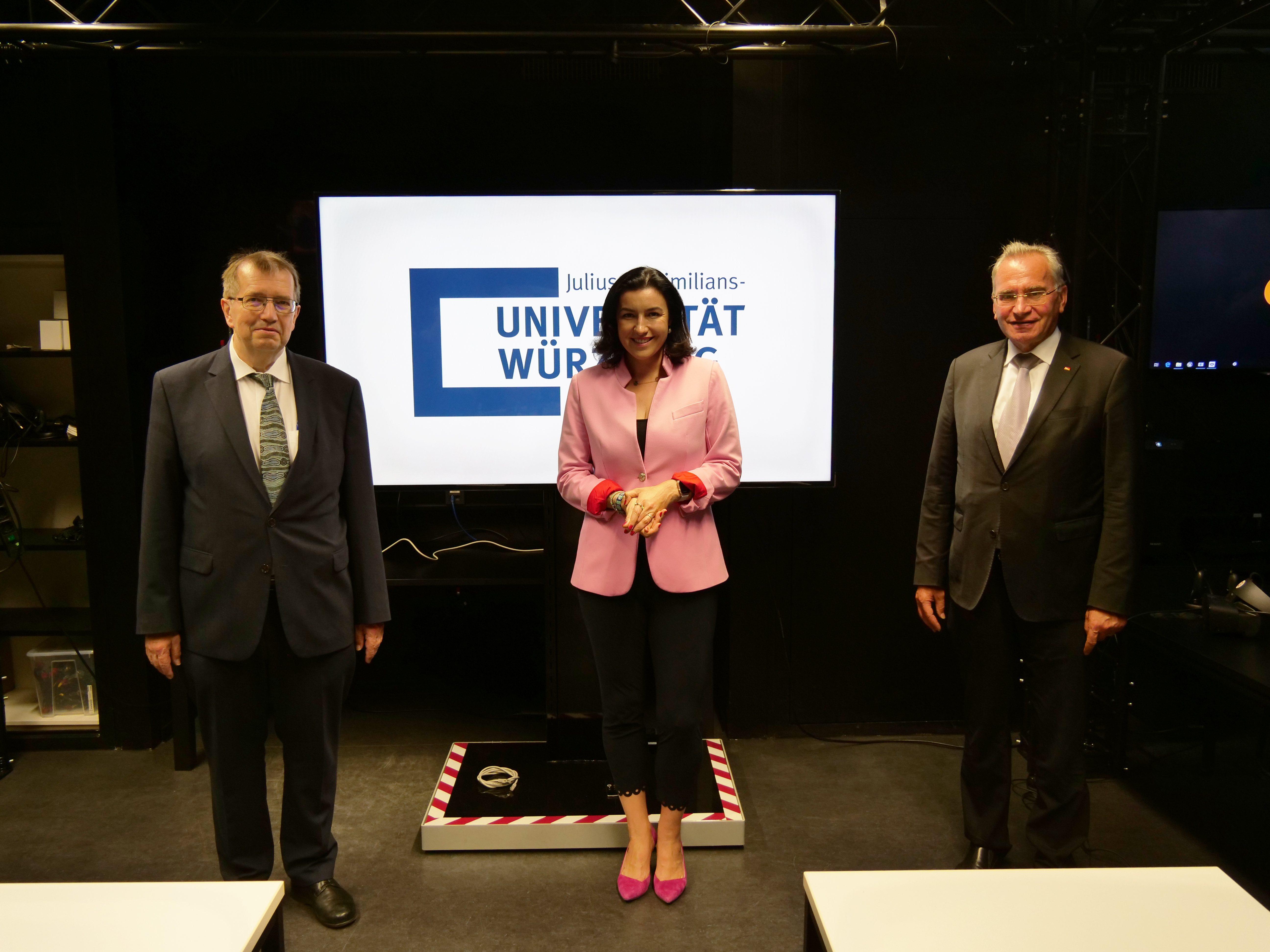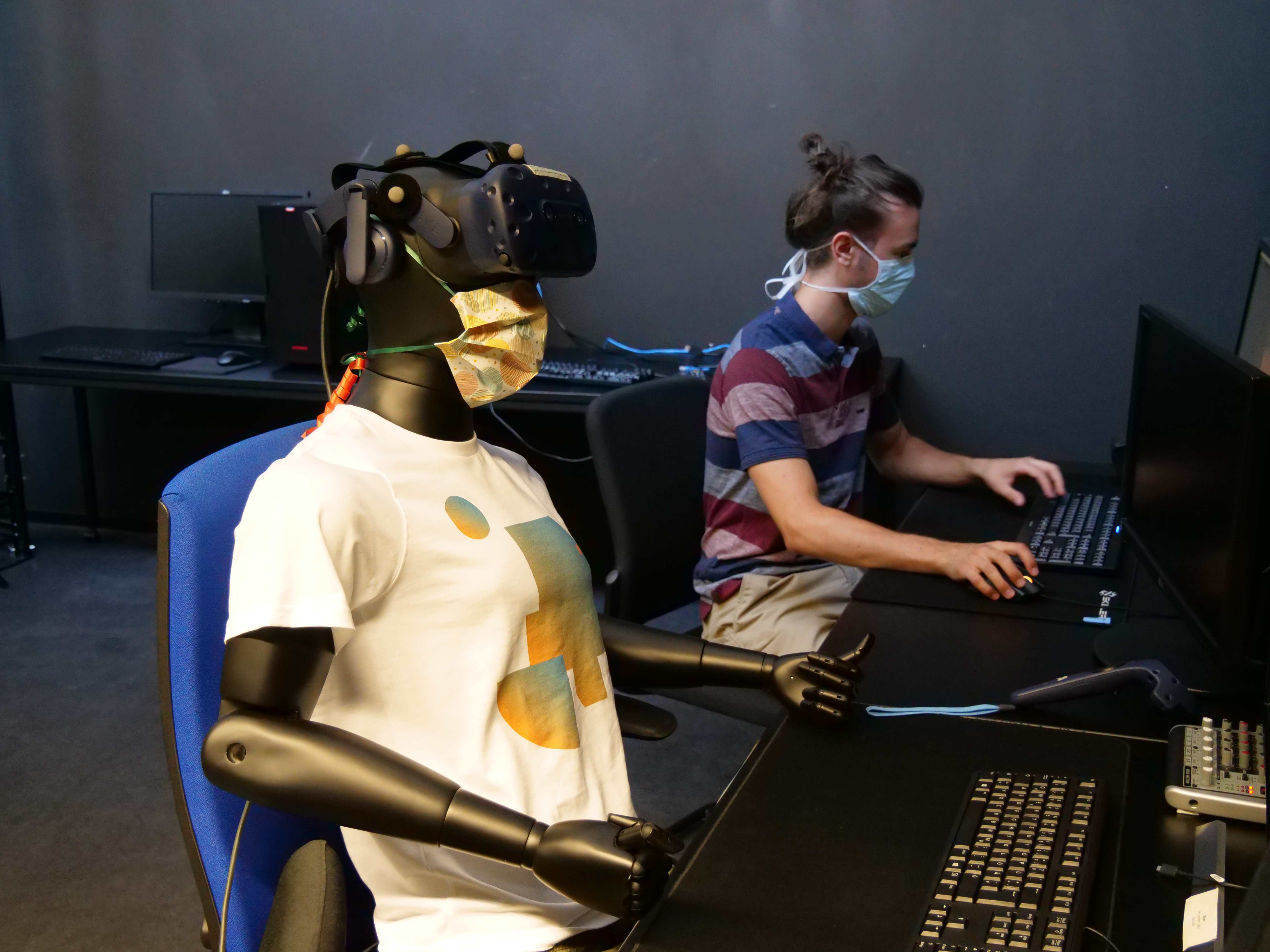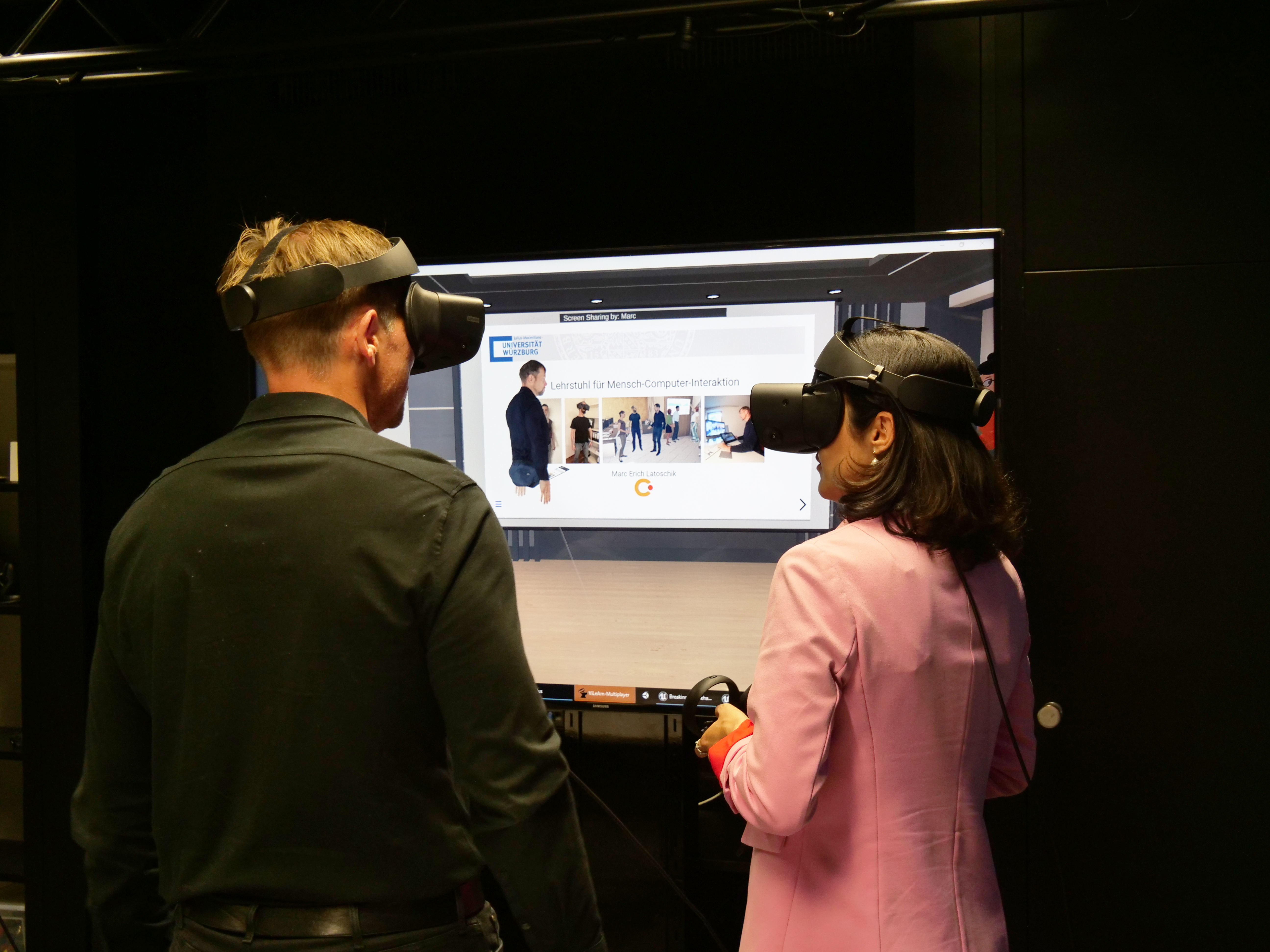Insights for minister of state Dorothee Bär
30 Jul 2020
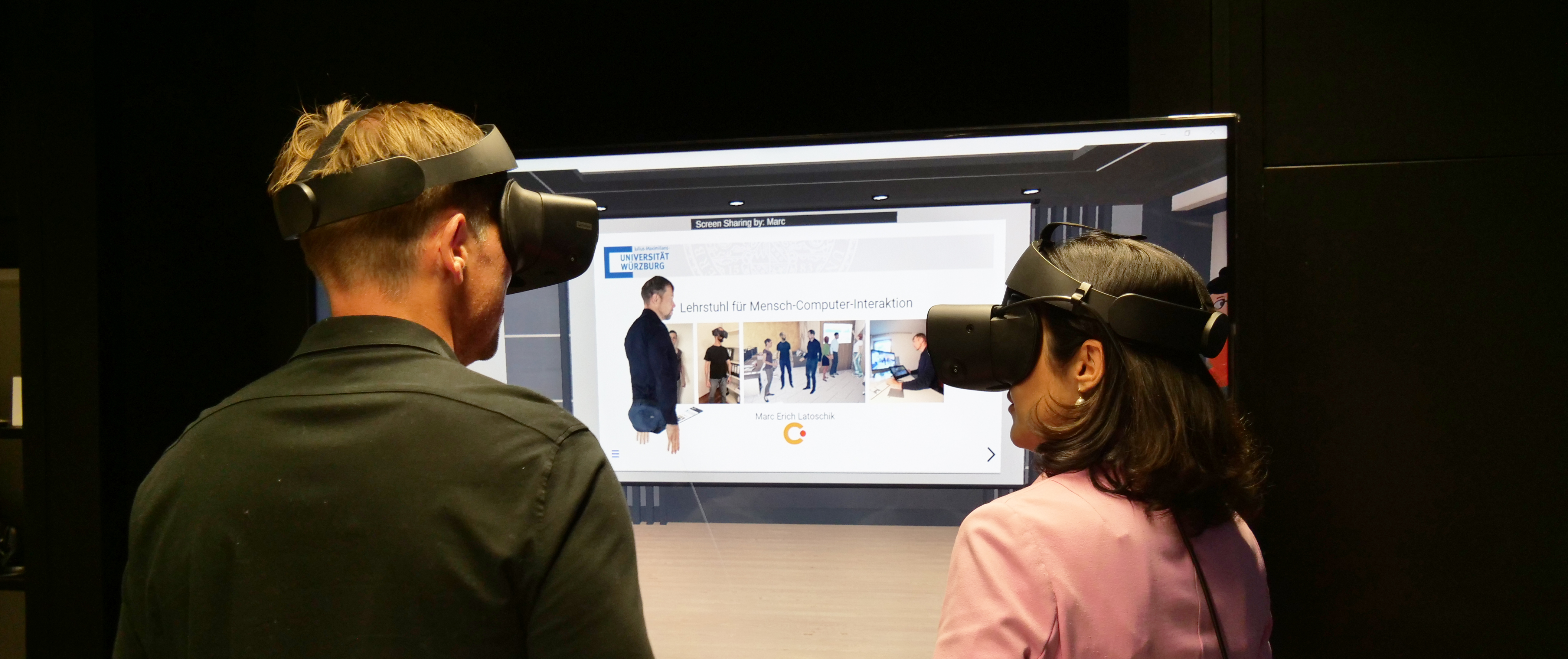
As part of her work as Minister of State and Federal Government Commissioner for Digitisation, Ms Dorothee Bär (MdB) visited the Julius Maximilian University (JMU) on 30.07.2020. She was particularly interested in the newly founded competence Center for Artificial Intelligence in Data Science (CAIDAS).
The center combines methods from data science and artificial intelligence (AI) with application fields for science, economy and society. It was founded in the context of the High-Tech-Agenda of the Free State of Bavaria. As spokesman for the Center, Andreas Hotho, Professor of Computer Science, presented the most important points to the Minister of State.
The core of the centre consists of 30 chairs and professorships. Here Mrs. Bär wanted to know what the situation is regarding the filling of these positions by women. According to Professor Hotho, however, this is “difficult”. The JMU is indeed anxious to further increase the proportion of women in its professorships. But at around 20%, the proportion of women among computer science students is comparatively low; at higher career levels, it is even lower.
CAIDAS is part of a Bavaria-wide AI network. The politician asked the professor whether he considered such networks to be useful. “Absolutely. In my subject, all major breakthroughs are currently happening in larger research networks; the networking of different competences is very important.”
Insights into CAIDAS research
In addition to Prof. Hotho, three other professors who belong to CAIDAS presented Ms. Bär some of their current research projects: Marc Erich Latoschik, expert in human-computer interaction, Fotis Jannidis, literary scholar and computer philologist, and the physician and immunologist Georg Gasteiger.
Andreas Hotho presented, among other things, the BigData@GEO project. This is a project where Data Science is conducted in the field of environmental data. The aim is to enable companies to better assess how they need to prepare for the future in times of climate change. To this end, the aim is to develop local climate forecasts in cooperation with companies from the winegrowing and agricultural sectors.
Fotis Jannidis showed what computer algorithms and AI can do for literary text analysis. An example from this work: The automated word analysis of romance novels proves that these stories are always very much about social class differences.
Georg Gasteiger researches immune cells that remain permanently resident in various human organs. What “language” do these cells use, how do they communicate with each other? It is also a kind of “text investigation” that Gasteiger conducts using methods of AI and machine learning. This might for example improve the analysis of biopsies for tumour cells.
Marc Erich Latoschik and his team present some projects in the field of virtual and augmented reality. One project deals with the development of therapeutic options for people suffering from adiposity. For this purpose, photorealistic avatars of the patients are created, which can be made thicker or thinner in a virtual environment. In this way, an attempt is being made to positively influence the body perception of those affected.
In order to give Mrs. Bär a better insight into this kind of body experience, Latoschik’s team created such an avatar of the Minister of State. With this avatar she could experience a virtual world at the end of her visit. She could face her virtual self in a narrower and in a fuller version in a virtual world.
This article is based on a press release from the University Wuerzburg by Robert Emmerich.
External Links
Einblicke für die Staatsministerin




